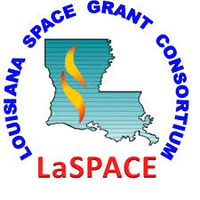Louisiana Space Grant Consortium
REA: Arumugam, LaTech

The LaSPACE Research Enhancement Awards (REA) Program is intended to provide support for faculty (and students) at LaSPACE member institutions, particularly aimed at the emerging researcher or an established researcher who wishes to pursue new research directions, for the development of projects, contacts, and collaborations that will bring Louisiana scientists into the mainstream of NASA related research activity, thereby increasing their chances to successfully compete in the aerospace R&D marketplace. As is true with all LaSPACE Programs, minority participation is strongly encouraged. The REA Program is funded by state matching funds, through the Board of Regents Support Fund. The awards are intended to develop expertise and to contribute to research competitiveness. However, awards are not intended purely to support faculty salaries or graduate student stipends. It is anticipated (and strongly advised) that students (both graduate and undergraduate) will be involved in REA projects, but the overriding goal is the development of research capabilities and infrastructure in support of the countrys space/aerospace endeavors. In that regard, contacts/collaborations/ties to NASA centers and NASA researchers are strongly encouraged. The overall goal for this Program is to effectively utilize the resources available through LaSPACE as incentive for faculty and students: 1) to develop research competitiveness 2) to develop new research projects or directions, and 3) to foster collaborations among the campuses, as well as with NASA centers and/or other federal laboratories and with the business/industry community.
REA, Arumugam, LaTech, Proposal Abstract: Aging-related neuronal death is the result of several mechanisms that include oxidative stress (OS). OS is caused by an imbalance between the overproduction or the inadequate detoxification of reactive oxygen species (ROS). OS induced neuronal injury plays a significant role in aging and neurodegenerative diseases. Current approaches are adequate only for the detection of long-lived relatively stable oxidizing species such as hydrogen peroxide (H2O2). This greatly restricts the scope of scientific progress in this field which effects millions in the US alone, and costs upwards of $1.5 trillion annually. The goal of this project is therefore to develop a novel carbon nanotube (CNT) modified metal microarray technology that detects ROS by assaying the total antioxidant capacity (TAC), which is considered an excellent indicator for ROS. The two main objectives are: (1) to micro-fabricate a 2×3 platinum microarray that is suitably modified with CNTs and amino acids in Q1 and Q2 of the project timeline and (2) to demonstrate near-simultaneous sensing of three OS biomarkers (i.e. H2O2, ascorbic acid, uric acid) in vitro in Q3 and Q4. The key feature of this technology is the elucidation of OS mechanisms in different brain regions of interest and development of rational therapies. The expected outcomes are: (1) Create new knowledge in the understanding of the role of ROS in the cell function and aging of astronauts involved in long-term missions and (2) Apply the proposed technology in neuroscience and in the measurement of basic biological processes related to aging and age-related diseases.

